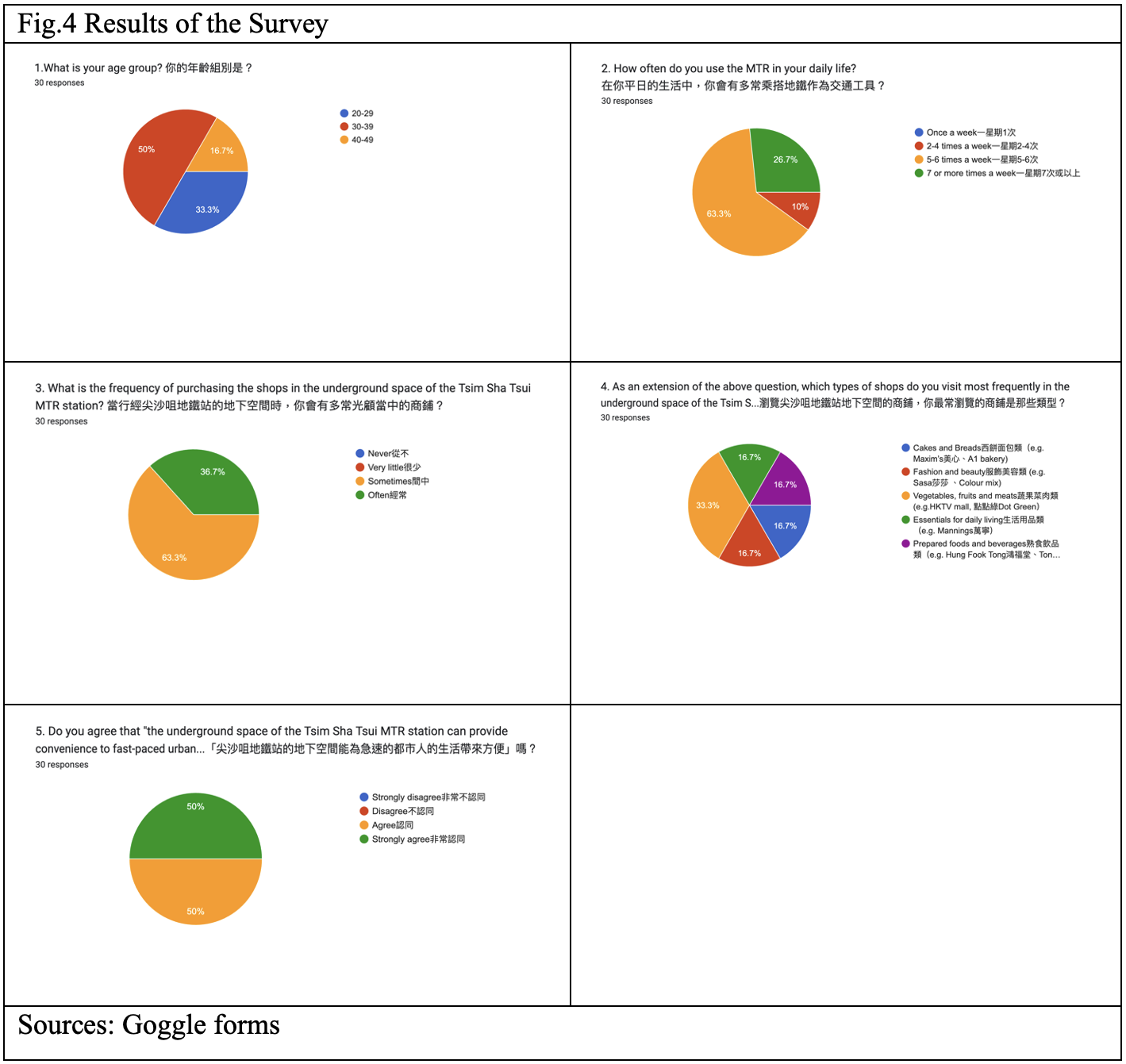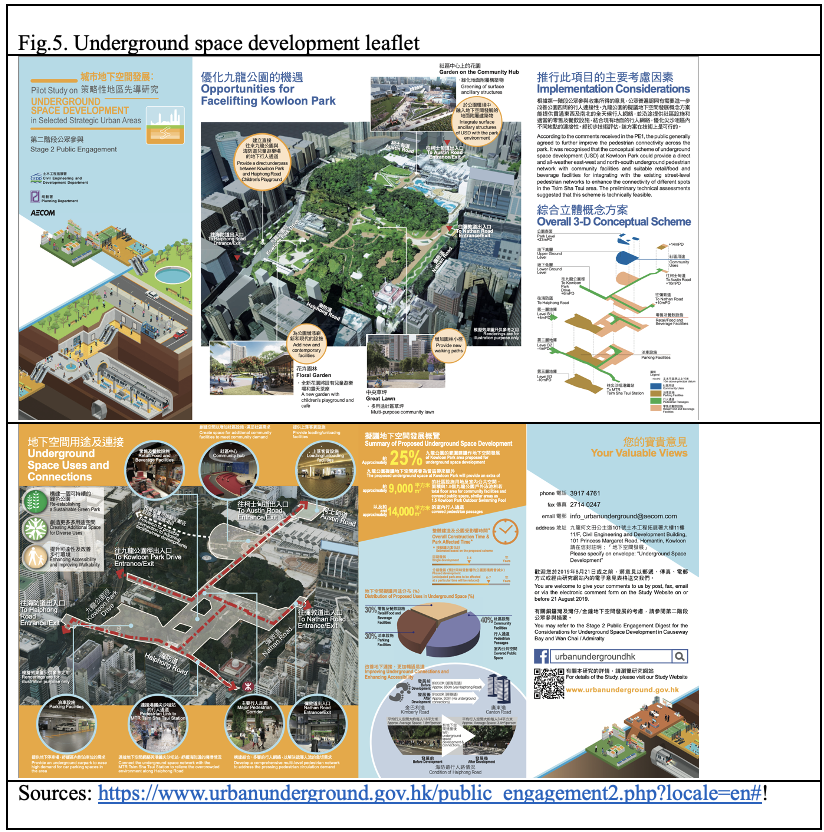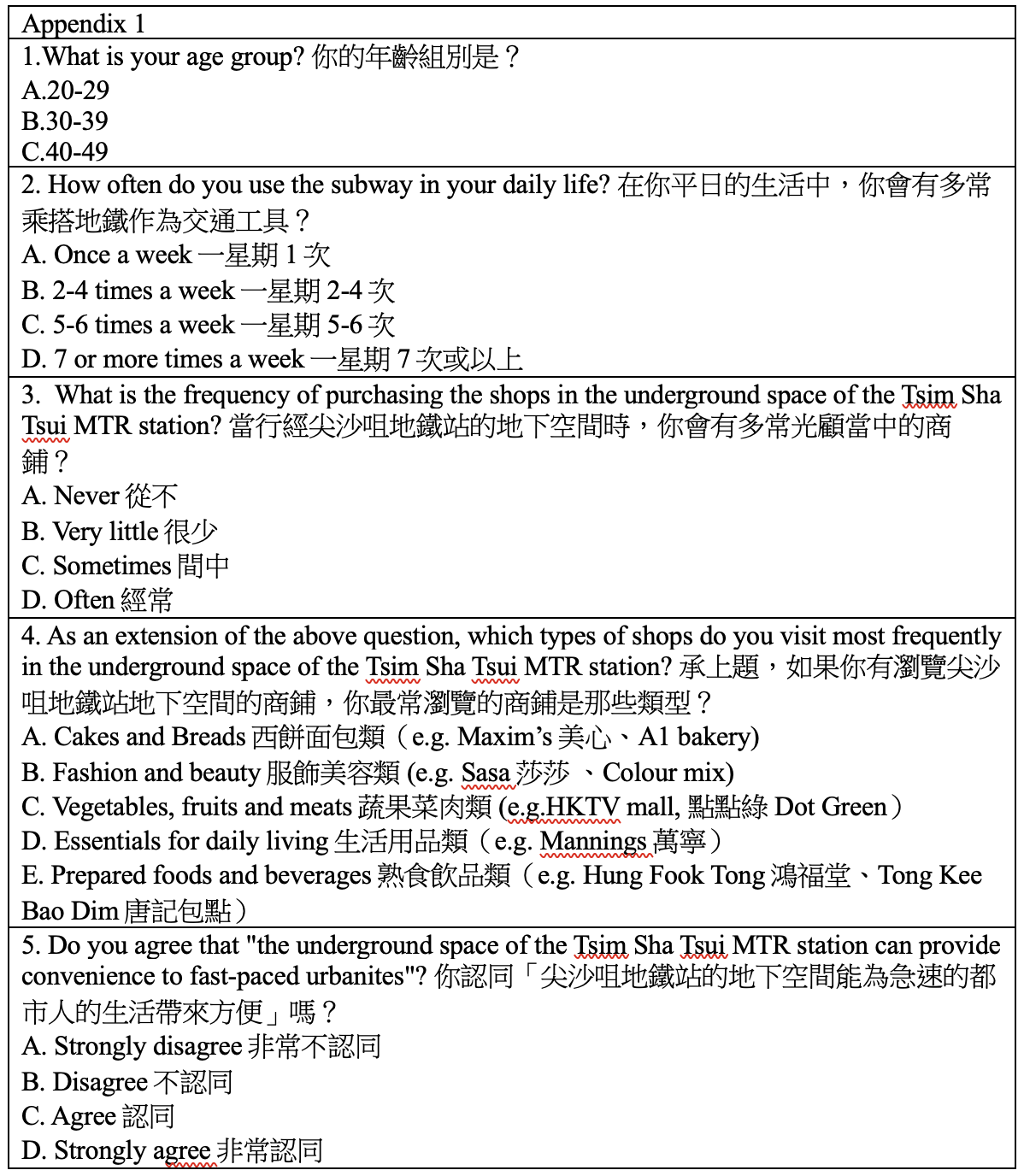Director : Chow Pinky Hoi Yan
Research Background
Hong Kong, known for its fast-paced lifestyle, is one of the most densely populated cities in the world. According to Statista’s 2022 data, it ranks ninth with over 25,684 inhabitants per square kilometer. Over the past three decades, Hong Kong’s population has experienced significant growth. The population increased from 5.75 million in 1991 to 7.41 million in 2021, with an average annual growth rate of 0.8% (C&SD, 2022). Consequently, the Hong Kong government has recognized the need to adapt urban planning to address the challenges related to population increase, transportation, and land scarcity (Ganesan & Lau, 2000). As early as the 1980s, the government initiated the exploration of underground spaces as a solution.
Theme, Setting and Components
This video explores the role of transitional spaces in everyday life. The development of the city and its railway infrastructure prompted the construction of an extensive underground system in Tsim Sha Tsui. The underground space network in Tsim Sha Tsui was established in 1979, and further expansion included the construction of the new East station on the West Rail line in 2004 and 2005 (Fig. 1). This underground system consists of 26 MTR stations, providing convenient, safe, and all-weather access to major sites, such as malls, hotel basements, and commercial buildings. The underground walkway spans approximately 1.45 kilometers. The increased use of the underground system by pedestrians can be attributed to its integration with commercial activities, connecting shops and malls (Shelton et al., 2013). This arrangement allows shoppers to access various stores conveniently while walking. Essential items, including clothing, beauty products, groceries, and prepared food, are readily available in the underground space (Fig. 2 & Fig.3), catering to people of different ages and backgrounds, such as office workers, housewives, students, and night-time workers. In this video, an underground world hidden below the surface of the city is captured.
Research Methods
This study aims to examine the benefits of underground spaces to the public. Data collection was conducted using a quantitative research method through a questionnaire comprising five questions. To ensure a representative sample, 30 pedestrians aged between 20 and 49 were selected. Respondents were requested to complete the questionnaire via a Google form. The data collected from the Google form were analyzed and discussed.
Video Producing Methods
There were multiple stages involved in the production of the video, including pre-production, production, sound design, editing, and post-production (Lone Star College, 2023). To have better understand the relationship between the city and its underground space extensive research and fieldwork were undertaken during the pre-production phase, including surveys of pedestrians and data analysis.
As a second step, the designed film storyboard used to film and take pictures on site. A storyboard is often considered to be imagery (Marcie, 2004). To assist me in communicating my ideas, I outlined nine main scenes, divided them into panels, added descriptions and notes.
Moreover, with a view to give the audience a structural and coherent experience, I used different approaches to taking photos and videos, include wide shots of Nathan Road to demonstrate a crowded urban environment, zoom-in functions applied to the menu of the shop, close-up shot depicts exits, shop names, facilities, and pedestrians moving through the walkway to emphasize the city’s fast-paced lifestyle. and throughout the B-roll footage, the accessibility and convenience of underground shops are emphasized. When segmenting and identifying the sequences of the B-roll, it may be useful to create ‘states’ (Christensen, 2007).
In the third stage, I removed unwanted noise, used an Octopus card as sound effect to illustrate quick payments found in daily life, and used the iPhone camera shutter sound effect to illustrate variety shops. A relaxing background music was also added to show people shopping underground. It has been shown that great audio is key to a video (Wallace, 2016).
In the fourth stage of editing, I merged the subtitles with the entire video. During the post-production process, to enhance the dynamic of the video, time laps were converted to normal speed, and normal speed was converted to time laps to create an impression of a fast-paced city. Then, I combined separate pieces of thematically related video into a sequence using the montage editing technique.
Reflections
The storyboard allows me to visualize the shots and transitions before the filming takes place, which assists in planning the production process. In the process of developing the video’s concept and storyline, many factors were considered, such as fieldwork and survey information, which allowed me to ensure that the final product accurately reflects the reality of the city and its underground spaces. As part of a field trip along Nathan Road, I used my smartphone to record for thirty minutes at one specific location. The experience helped me understand how quickly the city moves and how people come and go at all times.
Results
Overall, the study found that the Tsim Sha Tsui underground system is perceived as beneficial by the public. Approximately 63% of respondents reported frequent purchases at the shops in the underground space (Fig. 4). Furthermore, 100% of respondents agreed that the underground space provides convenience for fast-paced urbanites.
Conclusion
The development of underground spaces increases the available usable space, allowing optimal utilization of land resources (He et al., 2012). The majority of participants in this study acknowledged that the underground system in Tsim Sha Tsui provides convenience for satisfying the needs of the people living in such a rapidly growing area. A comprehensive study is required to determine which shops and facilities can be incorporated into underground space development. In Hong Kong, public engagement has been conducted for underground space development, as demonstrated by the “Opportunities for Facelifting Kowloon Park” initiative in 2019 (Fig. 5).






References
Background Music Without Limitations. (2021, May 16). Cool Upbeat Background Music For Videos | No Copyright Music [Video]. YouTube. https://www.youtube.com/watch?v=CdbVv1FPSrs
BreakingCopyright — Royalty Free Music. (2021, October 27). 🚤 Easy Listening (Royalty Free Music) – “BAIKAL” by @scandinavianz 🇫🇮 [Video]. YouTube. https://www.youtube.com/watch?v=HOpJqd7_pxM
Chan, H. Y., Xu, Y., Chen, A., & Liu, X. (2022). Impacts of the walking environment on mode and departure time shifts in response to travel time change: Case study in the multi-layered Hong Kong metropolis. Travel Behaviour and Society, 28, 288-299. https://doi.org/10.1016/j.tbs.2022.04.010
Cities with the highest population density 2022. Statista. (2022, August 5). Retrieved May 8, 2023, from https://www.statista.com/statistics/1237290/cities-highest-population-density/
Christensen, L. L. (2007). video production. Retrieved May 8, 2023, from https://www.researchgate.net/publication/319740287_Video_Production
“demographic trends in Hong Kong 1991-2021” published. The Government of the Hong Kong Special Administrative Region Press Releases. (2022). Retrieved May 8, 2023, from https://www.info.gov.hk/gia/general/202212/29/P2022122900259.htm
Essay on film storyboard. Cram. (n.d.). Retrieved May 8, 2023, from https://www.cram.com/essay/Importance-Of-Storyboard-In-Film/FC6C5UXY7WG#google_vignette
Ganesan, S., & Lau, S. S. Y. (2000). Urban challenges in Hong Kong: Future Directions for Design – Urban Design International. SpringerLink. Retrieved May 8, 2023, from https://link.springer.com/article/10.1057/palgrave.udi.9000001
Hong Kong’s urban planning experiment in enhancing pedestrian movement from underground space to the surface – Scientific Figure on ResearchGate. Available from: https://www.researchgate.net/figure/The-underground-system-at-TST-with-the-two-cases-exits-to-the-street-and-underground_fig1_326560089 [accessed 7 May, 2023]
Jackson, W. (2016). The Sound of Digital Video: Digital Audio Editing Theory. In: Digital Video Editing Fundamentals. Apress, Berkeley, CA. https://doi-org.eproxy.lib.hku.hk/10.1007/978-1-4842-1866-2_6
L. He, Y. Song, S. Dai, K. Durbak (2012). Quantitative research on the capacity of urban underground space – The case of Shanghai, China. 32, pp. 168-179. https://doi.org/10.1016/j.tust.2012.06.008
Lone Star College. (2023). Video production process. Lone Star College – Start Close. Go Far. Retrieved May 8, 2023, from https://www.lonestar.edu/33315.htm
Planning and development of underground space in selected places – legco. (2020). Retrieved May 8, 2023, from https://www.legco.gov.hk/research-publications/english/1920in05-planning-and-development-of-underground-space-in-selected-places-20200306-e.pdf
Q. Chen, M. Wang, Z. Huang, Y. Hua, Z. Song and S. Yan. (2013). “VideoPuzzle: Descriptive One-Shot Video Composition,” in IEEE Transactions on Multimedia, vol. 15, no. 3, pp. 521-534, doi: 10.1109/TMM.2012.2236306.
Springer New York. (2007). Video production. SpringerLink. Retrieved May 8, 2023, from https://link.springer.com/chapter/10.1007/978-0-387-49960-4_15
Zacharia, J., & He, J. (2018). Hong Kong’s urban planning experiment in enhancing pedestrian movement from underground space to the surface. Tunnelling and Underground Space Technology. Retrieved May 8, 2023, from https://www.sciencedirect.com/science/article/pii/S0886779817311598
Name : Chow Pinky Hoi Yan
UID: 3035994406
You have a titled your research very well – ‘Another World Below’. Linking MTR and the fast living pace in HK is a common yet appropriate topic. Yet, I think it is interesting that your research focuses on the shops rather than the transportation network itself. It is a pity that your video is more like an introductory video of what kinds of shops are there in a MTR station rather than this underground world. I appreciate your efforts of setting up questionnaire in collecting first-hand data but I could not see it being very helpful in responding to your research questions.
To sharpen your research, start with establishing clear research questions and conduct a spatial analysis of this magnificent underground world – for example, how does this transitional space not only letting people to transit, but creating its own ecology of being a commercialized space?